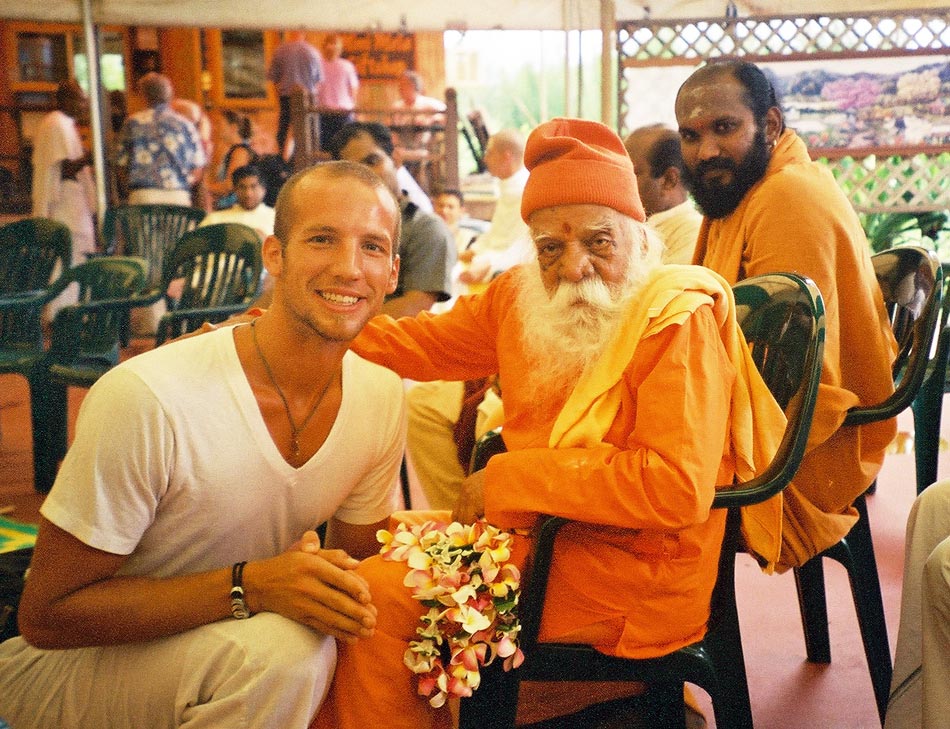The Yoga Sutras – realizing/refining the mind.
Written 2,500 years ago
Sutra means “small phrase with big meaning”
Traditionally, the Yoga Sutras were transmitted orally from teacher to student
Patanjali was a sage who presented the teachings of the Vedas about the mind in a precise, organized form. The Vedas (root vid-to know) are revealed knowledge, given to humanity at the dawn of time, passed on from generation to generation. They are compiled in 4 collections: Rig, Sama, Yajur, and Atharva. This collection both preserves hymns and philosophical interpretations of rituals used in Hindu worship. It addresses questions such as what life is the meaning of life, and what being human means. Patanjali is also considered to be the divine incarnation of the serpent Ananta, who supports the whole Universe, and Adisesa, “the first servant of God.”
How do the Yoga Sutras differ from other indian systems of philosophy?
Unlike other viewpoints which state that nothing is real except God, Patanjali asserts that everything in a person’s experience is “sat”, or “truth”, and cannot be denied. Duhkha, or suffering, is reality, everyone experiences it, and it is nothing to deny or to be ashamed of. Duhkha can be a tool to wake us up. As Krishnamacharya (Sri K. Pattabhi Jois’s teacher/Guru) would say, “Thank God for Duhkha”, the unavoidable motive for practice”. If there is desire (not necessarily a bad thing!) we can make positive changes.

I. SAMADHIPADA Explains the significance of yoga and samadhi, both meaning profound meditation and supreme devotion. The functions of mind, intelligence and consciousness are explained; the methods of developing and sustaining a permanently balanced, stable consciousness are shown. This pada is geared toward the lucky aspirants who are endowed with perfect physical health, mental poise, discriminative intelligence and a spiritual bent. Patanjali provides guidance in the disiciplines of practice and detachment to help them attain the spiritual zenith, the vision of the soul. Highlights the path of bhakti, or devotion.
II. SADHANAPADA Sadhana means practice. Patanjali advises on how to begin sadhana and work toward spiritual emancipation. Also deals with the body, senses, mind and connects them to the intelligence and consciousness. Explains the qualities necessary to change the mind from a state of distraction to one of attention. Highlights karma yoga, the yoga of action.
III. VIBHUTIPADA Concerns fairly evolved persons and their ability to achieve a seedless samadhi. Describes the capacity of the mind to attain knowledge previously unknown, and the inner quests of concentration (dharana), meditation (dhyana), and total absorption (samadhi). Highlights jnana yoga, the path of wisdom and knowledge.
IV. KAIVALYAPADA “The Quest of the Soul.” Patanjali demonstrates that the mind is a tool for evolution, the servant of the Self, not the master. If the mind is allowed to play master, there is going to be trouble no matter what the up achievement of the mind, and peace will be beyond reach. Highlights the path of renunciation, or virakti marga.

1.2 SHRADDHA VIRYA SMRITI SAMADHI PRAJA PURVAKA ITARESHAM
Wholeness is preceded by faith, energy, mindfulness, union and awareness
1.33 MAITRI KARUNA MUDITA UPEKSANAM SUKHA DUHKHA PUNYA APUNAY VISAYANAM BHAVANATAH CITTAPRASADANAM
Through cultivation of friendliness, compassion, joy, and indifference to pleasure and pain, virtue and vice respectively, the consciousness becomes favorably disposed, serene and benevolent.
2.1 TAPAH SVADHYAYA ISVARAPRANIDHANANI KRIYAYOGAH
Burning zeal in practice, self-study and study of scriptures and surrender to God are the acts of yoga.
2.46 STIRA SUKHAM ASANAM
The posture should be steady and comfortable.

With this truth bearing light will begin a new life. Old unwanted impressions are discarded and we are protected from the damaging effects of new experiences.
— Patanjali
Discover a digital reference flipbook Computer Download of the traditional Ashtanga Yoga Primary Series taught by the late great master Sri K. Pattabhi Jois of Mysore, India. Featuring the entire FUSION ELEMENTS IN SOUND formula – a dynamic, detailed blueprint.
Discover